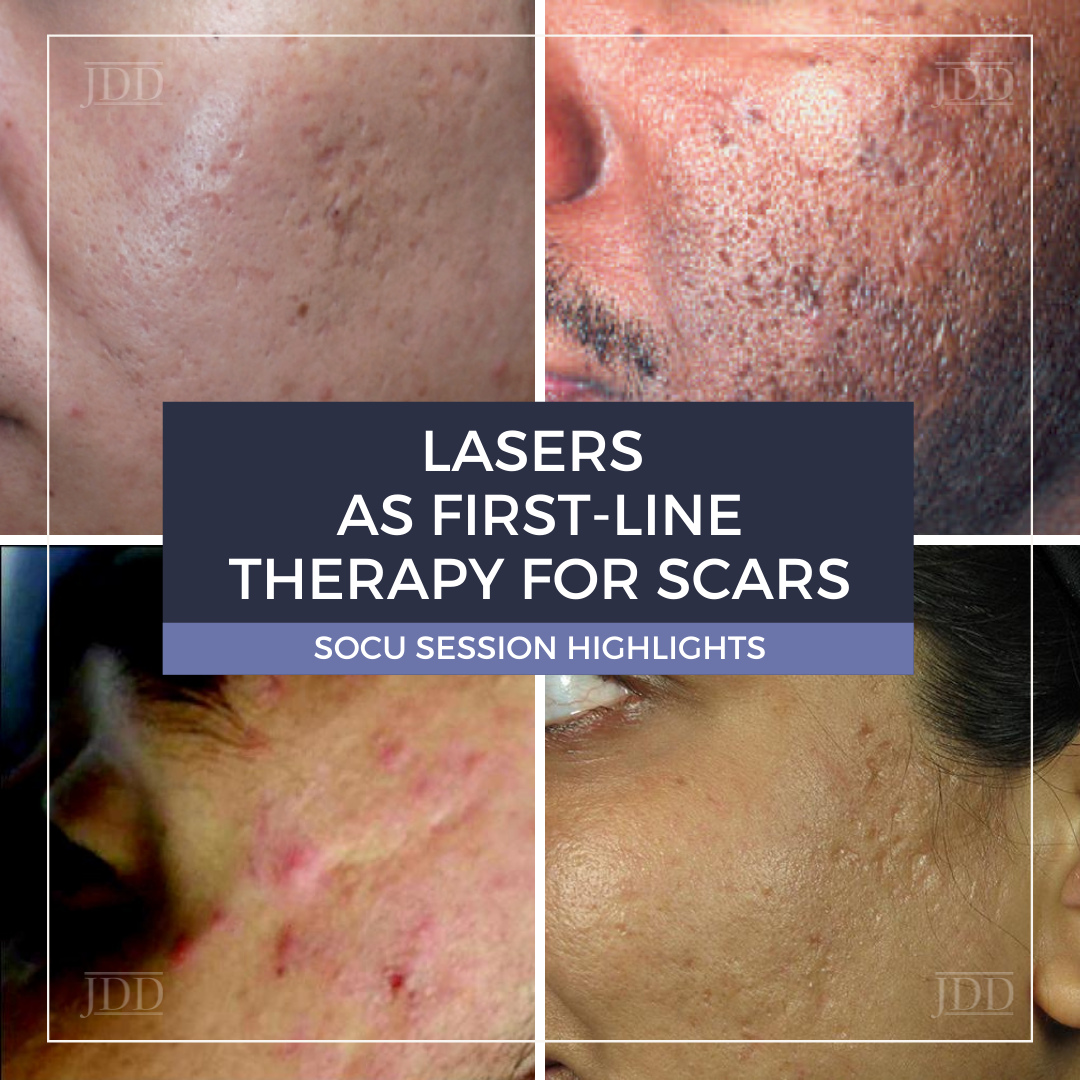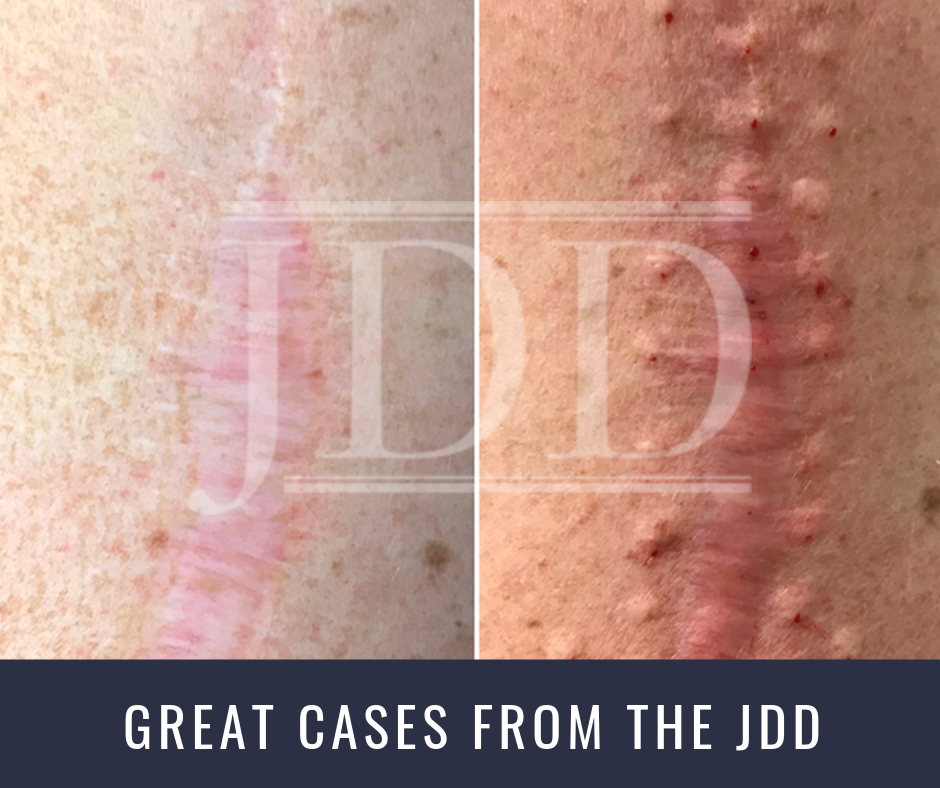Avoiding and Managing Complications: Hyperpigmentation and Scarring
214992149921499 Next Steps in Derm, in partnership with Pigmentary Disorders Exchange Symposium interviewed Dr. Andrew Alexis, professor of clinical dermatology and vice-chair for diversity and inclusion for the Weill Cornell Medical College Department of Dermatology. Watch as Dr. Alexis outlines how to avoid hyperpigmentation and scarring when performing a cosmetic procedure. Learn simple questions you can ask t …
Next Steps in Derm, in partnership with Pigmentary Disorders Exchange Symposium interviewed Dr. Andrew Alexis, professor of clinical dermatology and vice-chair for diversity and inclusion for the Weill Cornell Medical College Department of Dermatology. Watch as Dr. Alexis outlines how to avoid hyperpigmentation and scarring when performing a cosmetic procedure. Learn simple questions you can ask t …
 Next Steps in Derm, in partnership with Pigmentary Disorders Exchange Symposium interviewed Dr. Andrew Alexis, professor of clinical dermatology and vice-chair for diversity and inclusion for the Weill Cornell Medical College Department of Dermatology. Watch as Dr. Alexis outlines how to avoid hyperpigmentation and scarring when performing a cosmetic procedure. Learn simple questions you can ask t …
Next Steps in Derm, in partnership with Pigmentary Disorders Exchange Symposium interviewed Dr. Andrew Alexis, professor of clinical dermatology and vice-chair for diversity and inclusion for the Weill Cornell Medical College Department of Dermatology. Watch as Dr. Alexis outlines how to avoid hyperpigmentation and scarring when performing a cosmetic procedure. Learn simple questions you can ask t … Continue reading "Avoiding and Managing Complications: Hyperpigmentation and Scarring"


 Some of the most rewarding patients to help in dermatology are those who struggle with keloids and scars. The field remains an area of active research, and we are continually learning about the pathogenesis and optimal treatment modalities of scars. On Day 1 of the 2021 Skin of Color Update virtual conference, we were fortunate to hear from Dr. Jill Waibel MD, a world-recognized leader and innovat …
Some of the most rewarding patients to help in dermatology are those who struggle with keloids and scars. The field remains an area of active research, and we are continually learning about the pathogenesis and optimal treatment modalities of scars. On Day 1 of the 2021 Skin of Color Update virtual conference, we were fortunate to hear from Dr. Jill Waibel MD, a world-recognized leader and innovat …  Depending on your comfort level with treating scars, you may feel hesitation when taking on treatment for patients with keloids – especially those with skin of color. We all know keloids are more common in skin of color and we have most likely all treated these patients. But how can we improve patient outcomes and limit side effects?
During the 2020 Skin of Color Update, Drs. Maritza Pere …
Depending on your comfort level with treating scars, you may feel hesitation when taking on treatment for patients with keloids – especially those with skin of color. We all know keloids are more common in skin of color and we have most likely all treated these patients. But how can we improve patient outcomes and limit side effects?
During the 2020 Skin of Color Update, Drs. Maritza Pere …  Nowadays, a growing proportion of skin of color patients is undergoing cosmetic procedures. While we have reached the time where most of these procedures are effective in skin of color, they are not a one size fit all. Due to inherent differences in skin type, cosmetic procedures warrant a more conservative approach not only for clinically desirable but also for safe outcomes. At the Skin of Color …
Nowadays, a growing proportion of skin of color patients is undergoing cosmetic procedures. While we have reached the time where most of these procedures are effective in skin of color, they are not a one size fit all. Due to inherent differences in skin type, cosmetic procedures warrant a more conservative approach not only for clinically desirable but also for safe outcomes. At the Skin of Color …  Abstract
Botulinum toxin type A (BTA) is a neurotoxic protein that prevents the release of neurotransmitters from presynaptic nerves and has shown promise in treating neuropathic pain. Recently, BTA has been used to treat painful keloids and scars. We present a patient with refractory neuropathic pain in a normotrophic spread-scar treated with the injection of BTA.
A 47-year-old Caucasian female …
Abstract
Botulinum toxin type A (BTA) is a neurotoxic protein that prevents the release of neurotransmitters from presynaptic nerves and has shown promise in treating neuropathic pain. Recently, BTA has been used to treat painful keloids and scars. We present a patient with refractory neuropathic pain in a normotrophic spread-scar treated with the injection of BTA.
A 47-year-old Caucasian female …